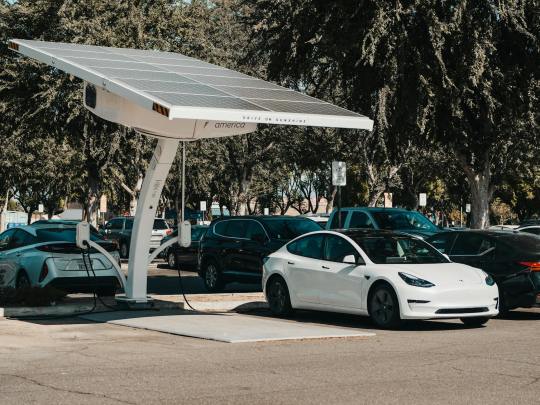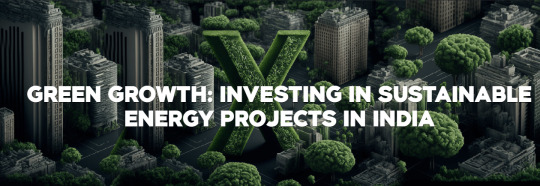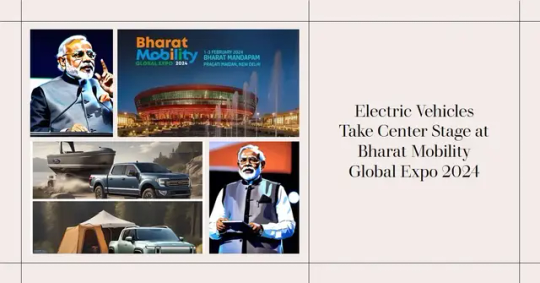#EV Charging infrastructure in India
Explore tagged Tumblr posts
Text
Rs 16,000 Crore Capex Required To Meet Public EV Charging Demand By 2030: FICCI Report
FICCI Report On Public EV Charging Infrastructure: India would require capital expenditure to the tune of Rs 16,000 crore by 2030, to meet its public EV charging demand and to achieve the mission of over 30 per cent electrification, as per a report by industry body FICCI. According to the ‘FICCI EV Public Charging Infrastructure Roadmap 2030’ put out on Monday, to achieve profitability and…
#EV Charging infrastructure#EV Charging infrastructure in India#FICCI Report#FICCI Report on Public EV Charging#Public EV Charging#Public EV Charging infrastructure
0 notes
Text
According to an electric vehicle charging station company in India, EV charging infrastructure needs immediate attention for eliminating range to help drivers charge conveniently and quickly. Insufficient power grid, geological diversity, and improper public charging are the top barriers to the development of EV charging infrastructure.
#EV Charging Infrastructure in India#EV Charging Infrastructure Company in India#EV Charging Solutions#Electric Vehicle Charging Infrastructure#EV Charger Manufacturer
1 note
·
View note
Text
Tata Power Solar and Bank of India Unite for Green Energy Financing
BOI Becomes First Bank to Partner with Solar Company for Dual Renewable Initiatives A groundbreaking partnership between Tata Power Solar Systems Limited and Bank of India aims to revolutionize access to sustainable energy solutions across India. The collaboration focuses on providing easy financing options for rooftop solar installations and electric vehicle charging stations. JAMSHEDPUR – A…
#बिजनेस#Bank of India partnership#business#clean energy accessibility#EV charging infrastructure#Green Energy Initiatives#MSME solar loans#PM Surya Ghar Yojana#renewable energy solutions#rooftop solar financing#sustainable development India#Tata Power Solar
0 notes
Text
How Many Electric Car Brands Are There in 2024?
The electric vehicle (EV) revolution has accelerated rapidly in recent years, transforming the automotive landscape. With growing environmental concerns and advancements in technology, 2024 marks a significant year for the proliferation of electric car brands. Understanding the current landscape of these brands is crucial as they play a pivotal role in shaping the future of…

View On WordPress
#2024 trends#ADAS#affordability#Arrival#autonomous driving#battery technology#BMW#Brazil#BYD#car sharing#charging infrastructure#consumer trends#diverse vehicle options#eco-friendly materials#economic growth#electric mobility#electric vehicles#emerging markets#emission reductions#EV Market#fast charging#Ford#Government Incentives#green manufacturing#India#Infotainment#innovation#international collaboration#Lucid Motors#NIO
1 note
·
View note
Text
Self-Monitoring Analysis and Reporting Technology
Thanks for the Valuable information. looking forward for more like this in future. Stay up to update with our latest news and updates about Smart-Grid, Energy & Utilities: https://www.eficaa.com/
EFICAA ENSMART Solutions Private LTD
Smart meter in hyderabad, smart metering companies in hyderabad, Smart metering company in hyderabad
#ev charging infrastructure india#what is iot and its applications#smart grids#smart grid manufacturers#tmds#tmms#dtms
0 notes
Text
India Electric Bus Market To Reach USD 2,766.1 Million by 2030
It is stated by a market research company, P&S Intelligence, the total size of the Indian electric bus market size will USD 603.1 million in 2022, and it will grow at a rate of 21% by the end of this decade, to reach USD 2,766.1 million by 2030. India is the second-most populated nation, following China. The national population figures continued to grow and so does the count of vehicles. The…
View On WordPress
#" "electric bus manufacturing in India#" "EV bus charging infrastructure in India#" "EV bus tenders in India#" "FAME India subsidy for e-buses#e-bus adoption in India
0 notes
Text
Eve: How the Female Body Drove 200 Million Years of Human Evolution (Cat Bohannon, 2023)
"In a wide variety of studies, covering cultures ranging from rural America to urban India, women are more likely to allocate financial resources in a way that directly affects the welfare of their immediate households and local community.
When given the opportunity, women are more likely to spend a family’s money on food and clothing and health care and children’s education.
Men, meanwhile, are more likely to spend it on entertainment and on weapons and—if we’re talking global trends—on gambling or the local equivalents.
Worldwide, girls and women spend up to 90 percent of their earned income on their families.
Men and boys spend only 30–40 percent.
When women in India were given the opportunity to participate in local governments as ministers and officers, those governments more greatly invested in things like public services and infrastructure, from waste management to potable water and railways—things that, as it turned out, seemed to matter more to female politicians.
It’s not that male politicians don’t care about community concerns and infrastructure.
They just seem to care about them less—or at least, if they have those concerns, they act on them less.
Similar trends can be seen in the voting habits of women in the United States and Europe.
As troubling as it sounds, the data exist: when you leave men in charge, roads and bridges and dams are effectively left to rot.
When women are empowered in local governance, for whatever reason, they are more likely to vote for local infrastructure (and health services and local, directly impactful public spending) than male politicians, and in Europe, they’re even likely to improve government transparency."
23 notes
·
View notes
Text
From wildfires in Canada to flooding in India, people across the world are dealing with the realities of climate change. The world recorded its highest temperatures ever this summer and the climate models for 2100 make sobering reading.
To tackle climate change we need a data-driven approach, using technology to help decarbonize the sectors that contribute to it. The transportation sector is the largest contributor to climate change in the US and Europe. Simply put, travel is in need of a long-overdue update. The good news is that, in 2024, we will kickstart that much needed moment for green mobility.
The International Energy Agency estimates 55 percent of the reductions needed to cut all greenhouse gas emissions by 2050 are linked to everyday consumer choices, particularly driving.
Over two-thirds of consumers cite the lack of electric charging stations as the biggest barrier to buying electric vehicles (EVs). However, new legislation, such as the European Green Deal and universal EV charging standards in the US, will help to put new chargers on the road.
The infrastructure is growing, but the information is still catching up. That’s why, to empower drivers with the information they need, Google has updated its Search experience to make it easier to research the costs and incentives associated with EVs. Google Maps also shows nearby EV chargers and offers eco-friendly routing—providing directions optimized for fuel or battery efficiency. In 2024, drivers will not only be able to more easily purchase an electric vehicle, they will be able to more easily charge them. The theory is simple: When billions of people have the tools to make more informed decisions, meaningful change is possible.
The impact of individuals grows exponentially when coupled with systemic investments by government officials and business leaders. We all know the feeling of impatience when waiting for the light to turn green. It’s not just an inconvenience, it’s bad for the environment—US Department of Energy data suggests that eliminating idling vehicles is equivalent to taking 5 million cars off American roads. In partnership with local governments, Google (where I am the chief sustainability officer) recently expanded Project Green Light—which leverages AI to improve traffic light efficiency—to 12 cities around the world. Early results show there’s potential to reduce the number of vehicle stops by up to 30 percent, lowering emissions for up to 30 million car trips monthly. Yet, we cannot focus exclusively on cars—providing sustainable public transport is also vital. Nowhere is the value clearer than in Japan, a leader in high-speed rail. One passenger traveling between Tokyo and Osaka emits 4.2 kilograms of carbon dioxide—one-twelfth the emissions of a passenger on a Tokyo-Osaka flight. That's why it's so important for people to have information on alternative, climate-friendly modes of transport at their fingertips—including comparable train routes, biking, and walking suggestions. This also illustrates the potential impact of projects like the Brightline train, designed to connect Los Angeles and Las Vegas by electric, high-speed rail.
Along with opportunities on roads and rails, in 2024 we will make progress on our skies. Aviation is responsible for 3.5 percent of global warming—35 percent of which is non-emissions related. The culprit? Contrails—the feathery white trails created by airplanes. They may look harmless, but they trap heat inside the Earth’s atmosphere. Using AI-based technology, Google partnered with American Airlines and Breakthrough Energy to reduce contrails by 54 percent—achieving the first proof point of verifiable and cost-effective contrail avoidance. Delta Airlines, Massachusetts Institute of Technology, and others are also working to tackle the issue. In 2024, clean mobility will move closer to the norm across transportation, not the exception.
6 notes
·
View notes
Text
Green Growth: Investing in Sustainable Energy Projects in India

In recent years, India has emerged as a beacon of opportunity for investors looking to capitalize on sustainable energy projects. With a growing population, rapid urbanization, and increasing energy demand, the country presents a fertile ground for investments in renewable energy infrastructure. Foreign Direct Investment (FDI) in India's renewable energy sector has been steadily rising, driven by favorable government policies, technological advancements, and a shift towards cleaner energy sources. In this blog, we will delve into the prospects of investing in sustainable energy projects in India, focusing on the opportunities, challenges, and the role of FDI in driving green growth.
The Indian Energy Landscape: A Paradigm Shift towards Renewables
India's energy landscape has undergone a significant transformation in recent years, with a pronounced shift towards renewable sources. The government's ambitious target of achieving 450 gigawatts (GW) of renewable energy capacity by 2030 underscores its commitment to clean energy transition. This transition is fueled by-
1. Government Initiatives: Schemes like the National Solar Mission, Ujwal DISCOM Assurance Yojana (UDAY), and the Green Energy Corridor Project aim to boost renewable energy adoption and address infrastructure challenges.
2. Attractive Policies: The introduction of initiatives like feed-in tariffs, renewable purchase obligations, and tax incentives have created a conducive environment for renewable energy investments.
3. Technological Advancements: Advancements in solar, wind, and energy storage technologies have significantly reduced costs, making renewable energy more competitive with conventional sources.
4. International Commitments: India's commitment to the Paris Agreement and its pledge to reduce carbon emissions have further propelled the transition towards cleaner energy sources.
Opportunities for Investors
Investing in sustainable energy projects in India offers a myriad of opportunities across various segments of the renewable energy value chain:
1. Solar Power: India receives abundant sunlight throughout the year, making it an ideal location for solar power generation. Opportunities exist in utility-scale solar parks, rooftop solar installations, and solar panel manufacturing.
2. Wind Energy: With a vast coastline and favorable wind conditions, India has significant potential for wind energy projects. Onshore and offshore wind farms, along with wind turbine manufacturing, present lucrative investment prospects.
3. Hydropower: Despite challenges, hydropower remains an integral part of India's renewable energy mix. Investments in small and micro-hydro projects, pumped storage facilities, and modernization of existing hydropower plants offer avenues for growth.
4. Energy Storage: As the penetration of renewable energy increases, the need for energy storage solutions becomes paramount. Investments in battery storage, pumped hydro storage, and innovative grid-scale storage technologies are on the rise.
5. Electric Vehicle Infrastructure: The growing adoption of electric vehicles (EVs) necessitates investments in charging infrastructure, battery manufacturing, and renewable energy integration to support sustainable transportation.
Role of FDI in Driving Green Growth
Foreign Direct Investment plays a crucial role in accelerating India's transition towards sustainable energy:
1. Capital Infusion: FDI provides the necessary capital infusion required for developing renewable energy projects, especially in the initial stages where large investments are needed.
Here's a more detailed explanation:
Foreign Direct Investment (FDI) involves the investment of capital from foreign entities into projects or businesses in a host country. In the context of sustainable energy projects in India, FDI plays a crucial role in providing the necessary financial resources to develop renewable energy infrastructure. Here's how capital infusion through FDI contributes to the growth of sustainable energy projects:
1. Financial Support: Developing renewable energy projects, such as solar parks, wind farms, or hydropower plants, requires significant upfront capital investment. FDI provides access to substantial funds that may not be readily available from domestic sources alone. This infusion of capital enables project developers to finance the construction, installation, and operation of renewable energy facilities.
2. Risk Mitigation: Renewable energy projects often involve inherent risks, including regulatory uncertainties, technological challenges, and market fluctuations. FDI can help mitigate these risks by providing financial stability and diversification of funding sources. International investors bring in expertise in risk assessment and management, which enhances project resilience against potential financial setbacks.
3. Scaling Up Operations: The scale of renewable energy projects in India is increasing rapidly to meet the growing demand for clean energy. FDI facilitates the scaling up of operations by enabling larger investments in utility-scale projects and supporting the expansion of manufacturing facilities for renewable energy equipment. This scalability is essential for achieving economies of scale, driving down costs, and enhancing the competitiveness of renewable energy solutions.
4. Access to Global Markets: Foreign investors often have access to global capital markets, which allows Indian renewable energy companies to tap into international funding opportunities. FDI can facilitate partnerships, joint ventures, or strategic alliances with foreign firms, opening doors to new markets, technologies, and business opportunities. This cross-border collaboration fosters knowledge exchange, innovation, and best practices in sustainable energy development.
5. Project Viability: Many renewable energy projects in India require long-term investments with relatively lengthy payback periods. FDI provides patient capital that is willing to commit to projects over extended periods, enhancing project viability and sustainability. Additionally, foreign investors' participation in project financing enhances investor confidence, attracting further investments from domestic and international sources.
2. Technology Transfer: Foreign investors bring in expertise and technology advancements that enhance the efficiency and effectiveness of renewable energy projects in India.
Here's a detailed explanation:
Foreign Direct Investment (FDI) brings more than just capital; it also facilitates the transfer of advanced technologies and expertise from foreign investors to domestic entities. In the context of India's renewable energy sector, technology transfer through FDI plays a critical role in advancing the adoption and deployment of renewable energy solutions. Here's how technology transfer contributes to green growth:
1. Access to Cutting-Edge Technologies: Foreign investors often possess cutting-edge technologies, innovations, and best practices in renewable energy development and deployment. By partnering with or investing in Indian renewable energy projects, foreign firms transfer these technologies to local entities, thereby enhancing the efficiency, reliability, and performance of renewable energy systems.
2. Enhanced Research and Development (R&D): FDI stimulates research and development activities in the renewable energy sector by fostering collaboration between domestic and foreign entities. Joint R&D initiatives, technology-sharing agreements, and collaborative projects facilitate knowledge exchange and innovation diffusion. This collaboration accelerates the development of next-generation renewable energy technologies tailored to India's specific needs and conditions.
3. Capacity Building: Technology transfer through FDI contributes to the capacity building of domestic stakeholders, including project developers, engineers, technicians, and researchers. Through training programs, knowledge transfer sessions, and skill development initiatives, foreign investors empower local talent with the expertise and know-how required to design, implement, and maintain renewable energy projects effectively.
4. Adaptation to Local Context: While foreign technologies may be state-of-the-art, they often need to be adapted to suit local conditions, regulations, and infrastructure constraints. Through FDI, technology transfer is not merely about importing foreign solutions but also about customizing and contextualizing them to meet India's unique requirements. This process of adaptation ensures the practical applicability and scalability of renewable energy technologies in the Indian context.
5. Spillover Effects: The benefits of technology transfer extend beyond the immediate recipients of FDI to the broader renewable energy ecosystem. As domestic entities gain access to advanced technologies and knowledge, spillover effects occur, leading to the diffusion of innovations across the industry. This ripple effect catalyzes further innovation, competitiveness, and growth in the renewable energy sector, driving overall green growth in the economy.
3. Market Expansion: FDI contributes to the expansion of the renewable energy market by fostering competition, driving innovation, and improving project execution capabilities.
4. Job Creation: Investments in renewable energy projects create employment opportunities across the value chain, from manufacturing and construction to operations and maintenance.
5. Long-Term Sustainability: FDI promotes long-term sustainability by aligning investments with environmental, social, and governance (ESG) principles, thereby fostering responsible business practices.
Challenges and Mitigation Strategies
While the prospects for investing in sustainable energy projects in India are promising, several challenges persist:
1. Policy Uncertainty: Regulatory uncertainty and policy inconsistencies can deter investors. Clear and stable policies, coupled with transparent decision-making processes, are essential to instill investor confidence.
2. Infrastructure Constraints: Inadequate grid infrastructure and transmission bottlenecks pose challenges to renewable energy integration. Investments in grid modernization and infrastructure development are imperative.
3. Land Acquisition: Securing land for renewable energy projects can be a complex and time-consuming process. Streamlining land acquisition procedures and addressing land-use conflicts are critical.
4. Financial Risks: Fluctuating currency exchange rates, project financing challenges, and revenue uncertainties can impact project viability. Risk mitigation measures such as hedging strategies and financial incentives are vital.
5. Technical Challenges: Variability in renewable energy resources, technological limitations, and equipment reliability issues require continuous innovation and R&D efforts to address.
Investing in India’s sustainable energy projects holds immense potential for both domestic and foreign investors. With supportive government policies, technological advancements, and a growing market demand for clean energy, the sector offers attractive opportunities for long-term growth and impact. Foreign Direct Investment plays a pivotal role in driving green growth by leveraging capital, expertise, and technology to accelerate India's transition towards a sustainable energy future. Despite challenges, the collective efforts of stakeholders can unlock the full potential of renewable energy and pave the way for a greener, more resilient India.
This post was originally published on: Foxnangel
#green growth#sustainable energy#renewables energy#renewable energy green energy#sustainable energy projects#foreign direct investment#FDI#invest in india#foxnangel
2 notes
·
View notes
Text
Mahindra & Mahindra’s EV Unit Seeks Investment Opportunities in India to Accelerate Growth

Mahindra & Mahindra, a prominent sports utility vehicle manufacturer, is reportedly in advanced discussions with British International Investment (BII) and other global investors to secure a substantial investment of up to ₹5,000 crore for its electric vehicles (EV) subsidiary. This new funding round is expected to value the EV unit at a higher valuation than the previous round, reflecting the growing interest in the Indian electric vehicle market. The investment aims to support Mahindra’s ambitious plans for expansion and the development of sustainable mobility solutions.
India’s electric vehicle market has been witnessing significant growth in recent years, driven by increasing environmental concerns, government initiatives, and evolving consumer preferences. As a result, established automakers like Mahindra & Mahindra are actively seeking investment opportunities in India to capitalise on this emerging market and accelerate their growth in the EV segment.
India has set an ambitious target to transition to electric mobility, aiming for 30% electric vehicle penetration in the country by 2030. The government has implemented various policies and incentives to encourage the adoption of electric vehicles, including subsidies, tax benefits, and the establishment of charging infrastructure. These measures have created a favourable environment for investors and manufacturers to participate in the Indian electric vehicle ecosystem.
To align with India’s electric mobility vision, Mahindra & Mahindra’s EV unit has outlined an aggressive expansion strategy. The company intends to launch five new electric vehicle models between April and October 2025, demonstrating its commitment to providing sustainable transportation solutions to Indian consumers.
By incorporating electric SUVs into its product portfolio, Mahindra aims to capture a significant market share in the fast-growing electric SUV segment. It anticipates that e-SUVs will account for 20-30% of its overall SUV sales, with sales volumes projected to reach around 200,000 units. This focus on electric SUVs aligns with the evolving preferences of Indian consumers, who seek both sustainability and performance in their vehicles.
Investment opportunities in the Indian electric vehicle market hold immense potential for both domestic and international investors. The sector offers an attractive landscape for investment due to the following factors:
Growth Potential: With the Indian government’s strong commitment to electric mobility, the EV market is poised for substantial growth. Increasing consumer demand, supportive policies, and infrastructure development create a favourable investment climate.
Technological Advancements: Investment in electric vehicles drives innovation in battery technology, charging infrastructure, and connected features. These advancements contribute to the overall development of the sector and create opportunities for investors to benefit from emerging technologies.
Environmental Considerations: Electric vehicles play a crucial role in reducing greenhouse gas emissions and combating air pollution. Investing in electric mobility aligns with global sustainability goals, making it an appealing choice for socially responsible investors.
Job Creation and Economic Growth: The growth of the electric vehicle industry stimulates employment opportunities across the value chain, including manufacturing, R&D, charging infrastructure, and support services. This fosters economic development and contributes to the overall growth of the Indian economy.
Mahindra & Mahindra’s pursuit of significant investment for its EV unit reflects the immense potential and investment opportunities in India’s electric vehicle market. As the demand for sustainable transportation solutions continues to rise, the sector offers a promising landscape for investors seeking long-term growth and environmental impact. With government support, technological advancements, and changing consumer preferences, investing in electric mobility can contribute to both economic development and a greener future for India.
This post was originally published on: Apppl Combine
#Invest In India#investment#apppl combine#EV#Grow With India#Investment In India#Investment Opportunities#Mahindra#Mahindra and Mahindra
2 notes
·
View notes
Text
Electric Auto Price in Coimbatore: What the Dealers Don't Want You to Know!

The electric auto price in Chennai ranges between 3 lakhs to 6 lakhs, while in Coimbatore, it falls between 2.5 lakhs to 5 lakhs. Book a free test drive today by contacting Siva at 8220390690.Also available in Zero down payment EMI options
Electric loading vehicle in Coimbatore

In the logistics sector, electric loading trucks are disrupting traditional transportation methods. Efficient and cost-effective, these trucks present the ideal solution for transporting goods over short and medium distances. Tekson Motors' loading vehicles not only address logistical challenges but also contribute to a cleaner environment, aligning with the nation's sustainability goals.
To Book test drive contact Siva at 8220390690
Electric trucks in Chennai - Tekson Motors
Now, let us focus on what sets Tekson Motors apart from the competition. Our unwavering commitment to innovation is evident in every vehicle we produce. Tekson Motors' e-auto rickshaws and loading trucks are specifically designed to cater to the diverse needs of urban transport and logistics. With a strong emphasis on quality, efficiency, and sustainability, our vehicles are poised to dominate the market.
Electric Auto in India
In the dynamic landscape of Indian transportation, Electric Vehicles (EVs) are paving the way towards a sustainable and eco-friendly future. Among these, electric auto rickshaws and loading trucks have emerged as the frontrunners, revolutionizing the way we commute and transport goods. In this blog post, we will delve into the current market trends, competitors, and the latest technologies in the e-auto sector. Lastly, we will shine a spotlight on Tekson Motors, showcasing why our offerings surpass the competition.
EV Market trend
The Indian EV market is currently experiencing a paradigm shift, with electric auto rickshaws leading the charge. The demand for electric auto in Coimbatore and Chennai is on the rise, presenting a tremendous opportunity for EV manufacturers in Tamil Nadu. At the forefront of this revolution is Tekson Motors, the leading electric auto maker in Coimbatore. With affordable electric auto options available in all districts of Tamil Nadu, we are reshaping urban mobility.
Competitors and New Technologies:
Various players have entered the e-auto market, each bringing distinctive features and innovations. From advancements in battery technology to the development of improved charging infrastructure, the competition is fierce. Nonetheless, Tekson Motors sets itself apart by prioritizing cutting-edge technology and visionary design. Our e-auto rickshaws and electric loading trucks are meticulously crafted, emphasizing efficiency, sustainability, and delivering a seamless driving experience.
Auto Rickshaws: Transforming Lives and Preserving the Environment:
Electric auto rickshaws have evolved beyond mere modes of transportation; they are drivers of change. With zero emissions, these vehicles significantly contribute to reducing air pollution in congested cities. Notably, the economic impact is substantial, as lower operational costs translate into increased earnings for hardworking drivers. The advent of electric autos in Coimbatore has led many auto drivers to double their income, empowering their families.
Conclusion:
As we embark on the journey towards a greener future, Tekson Motors stands tall as a symbol of innovation in the e-auto industry. Our commitment to providing reliable, sustainable, and efficient vehicles is reflected in every product we offer. Whether you reside in Chennai or Coimbatore, our e-autos and loading trucks are tailor-made to enhance your driving experience and contribute to a cleaner and brighter tomorrow. Choose Tekson Motors for a ride into the future of transportation in Coimbatore. If you have any doubts regarding or products please write us . If you are looking for other brands check out Mahindra electric truck
2 notes
·
View notes
Text
https://chargezone.com/charger-locator.html
India’s Fastest Growing EV Charging Network CHARGE ZONE is a tech-driven EV Charging infrastructure company specializing in B2B and B2C charging services on both dedicated and opportunity based charging using smart-grid network.
#ev charging stations near me#ev charging spot near me#ev charging points near me#public charging station nearest ev charging station#nearest car charging station#nearby charging stations#ev car charging station#find ev charging stations
2 notes
·
View notes
Text
Celebrating India’s EV Journey
Today is World EV Day. The day is observed every year with special awareness campaigns being organized globally to educate people about the benefits of electric vehicles.

While China is the world’s largest EV market, India is the second largest and most promising. Driven by incentives by the Centre and the states, the adoption of EVs is gaining momentum. India’s EV sector is attracting increasing investments in battery technology, charging infrastructure and product options. Some of the biggest brands in the EV space include Tata Nexon in cars, the Mahindra Treo in three-wheelers and Hero Electric and Ola in scooters. In addition, there are a whole lot of startups that are working on various aspects of the EV eco-system.
In this article, Autocar Professional takes you through India’s EV landscape with leaders in the segment commenting on sustainable mobility and a zero-emission future.
Meanwhile, a recent study by Castrol study has highlighted key insights on EV readiness for markets, carmakers, and consumers. Its global survey ‘Switching ON the rEVolution’ covering 10,000 consumers and 100 leaders from car manufacturers in 10 key global markets, including India suggests that 44 percent of consumers surveyed in India are considering an EV for their next vehicle purchase while 55 percent are still considering an ICE vehicle.
Shailesh Chandra, MD, Tata Motors Passenger Vehicles and Tata Passenger Electric Mobility

World EV Day is indeed a special day for us, as we look back and reflect on our journey so far. We are proud to lead the EV market in India, with a lion’s share of 88 percent. As early entrants, we have shaped the market and seen it grow with Nexon EV and Tigor EV. We have over 40,000 Tata EVs plying on road. We have also established Tata UniEVerse, a one of its kind EV ecosystem, which is further propelling the EV adoption.
Santosh Iyer, VP-Sales & Marketing, Mercedes-Benz India

Mercedes-Benz Indian has a very aggressive EV roadmap for the Indian market with three new luxury EVs. We pioneered luxury EVs in India with the EQC in 2020, which received good response from the early adopters in the luxury segment. EQC’s acceptability and market success set the ground for other brands to foray into the luxury EV segment.
Suman Mishra, Mahindra Electric Mobility

We celebrate India’s electrification journey. At Mahindra Last Mile Mobility, we are committed to promoting sustainable motoring with zero emission products. I am confident that with our collective efforts, we can enable a green and smarter tomorrow for India.
Warren Harris, CEO, Tata Technologies

Tata Technologies’ vision of Engineering a better world embodies our commitment to providing sustainable solutions especially in the rapidly growing Electric Vehicle Market. The transition to EV is also an opportunity and would also be synonymous with a move to connected vehicles enabled by ADAS and digital customer experience solutions. Tata Technologies offers end-to-end solutions for engineering, manufacturing support, and customer experience solutions for EVs globally. We have developed an elaborate EV ecosystem through alliances and partnerships across the world, including an alliance with MIH Consortium which enables us to leverage the EV ecosystem to deliver best value for our Customers.
Nagesh Basavanhalli, Executive Vice Chairman, Greaves Cotton

Greaves Electric Mobility owned Ampere is one of the fastest growing electric two-wheeler brands in the Country while the company also operates/owns the rapidly growing e-rickshaw brand Ele (Bestway) and the Teja (MLR Auto) range of L5 category three wheelers. Together the portfolio offers a strong value proposition to electrifying the way people and goods move across our country.
Mahesh Babu, CEO, Switch Mobility India, COO, Switch Mobility

To meet India’s global commitment to become Net Zero by 2070, we need to prioritize not just public transport, but public transport with zero tailpipe emissions. Electric buses are clearly the best and obvious solution to accelerate decarbonisation with increasing mass mobility. It is this imperative that guides us at Switch Mobility — to help India attain its ambitious Net Zero target by offering the society with smart, clean mass mobility solutions that are also technologically advanced, safe and comfortable for passengers. Our vision is to transform mass mobility across cities and highways, and bring about a clean revolution in the way people travel. I take the opportunity on World EV Day 2022 to invite partners and people who share the same vision to jointly achieve this critical transition.
Balbir Singh Dhillon, Head of Audi
We have installed 100+ chargers pan-India and 16 high-speed 50kW chargers across our dealerships located across strategic highways within the country. In line with our global plans to be all-electric by 2033, we are aiming to achieve about 15 percent of our India sales from EVs by 2025–2026. It’s time we start to care for the climate. I think the sooner we realise we are responsible for it, the better it is for all.
Read More: https://www.tatatechnologies.com/en/media-center/celebrating-indias-ev-journey/
2 notes
·
View notes
Text
India's Electric Vehicle Revolution: Charged Up for the Future
Share your thoughts! What excites you most about India's EV revolution? What questions do you have? Let's discuss!
हिन्दी में पढ़ना चाहें तो आप इस लेख को न्यूजपैट्रन हिन्दी पर पढ़ सकते है [इलेक्ट्रिक वाहन: भारत का नया और हरा भविष्य – इलेक्ट्रिक वाहन भारत में तेजी से बढ़ रहे हैं, जो आर्थिक, पर्यावरणीय, और ऊर्जा सुरक्षा के लिए लाभदायक हैं। इस लेख में, आप इलेक्ट्रिक वाहनों के बारे में सब कुछ…

View On WordPress
#charging infrastructure#clean air#electric cars#electric vehicles#EV revolution#future of transportation#government incentives#India#Mahindra eVerito#Sustainability#Tata Nexon EV
0 notes
Text
#smart meter in hyderabad#smart metering companies in hyderabad#smart metering company in hyderabad#smart energy meter in hyderabad#self-monitoring analysis and reporting technology#smart meters#applications of smart grid#smart meters energy#iot smart grid#ev charging infrastructure india#what is iot and its applications
0 notes
Text
By 2030, India envisions a bustling urban landscape transformed by electric vehicles (EVs), with a goal of *30% of new vehicle sales* being electric.
The nation's *EV market is thriving* , marked by record sales, particularly in electric *two- wheelers* and three-wheelers, highlighting India as a global leader.
Initiatives like the PM E-Drive scheme and government incentives have fueled this growth, while the transition aims to address severe *air pollution* .
Although challenges persist, including a lack of *charging infrastructure,* plans for extensive charging networks and advancements in EV technology are underway.
The cultural shift towards electric mobility promises *cleaner air and energy security,* positioning India as an inspirational model for sustainable *growth in developing nations.*
http://arjasrikanth.in/2024/12/30/wired-wheels-and-green-streets-indias-electrifying-leap-into-2030/

0 notes